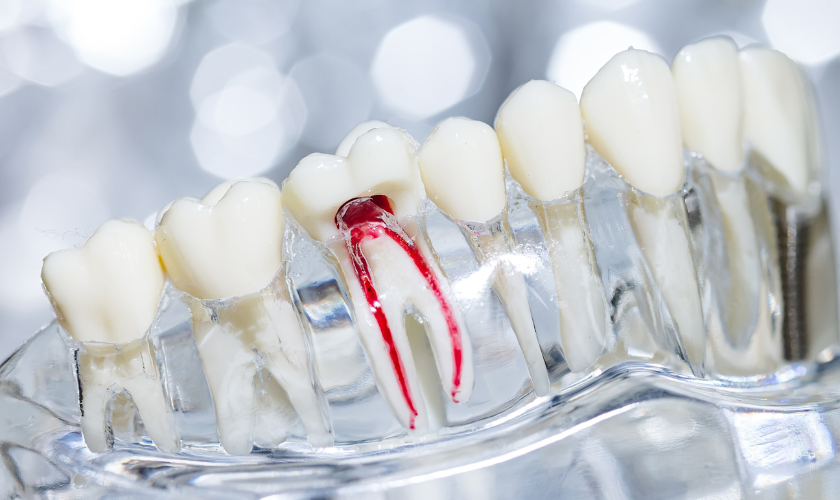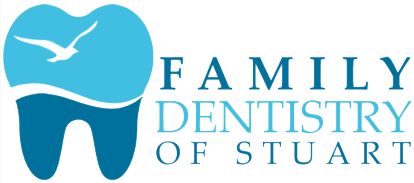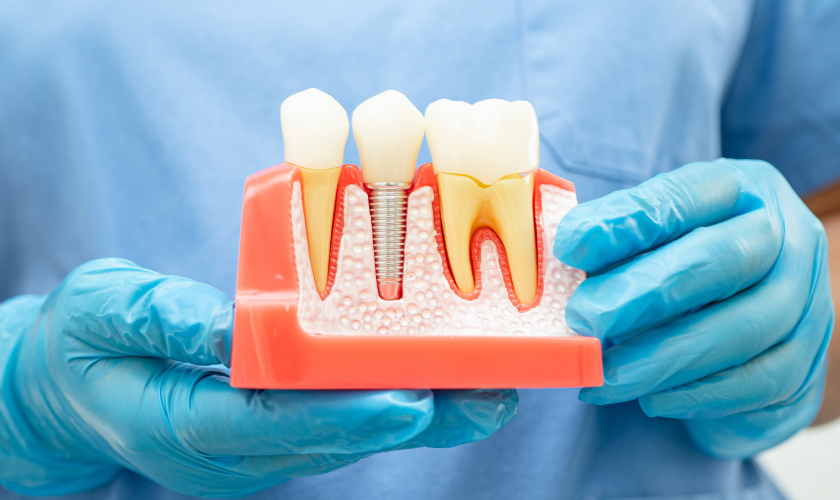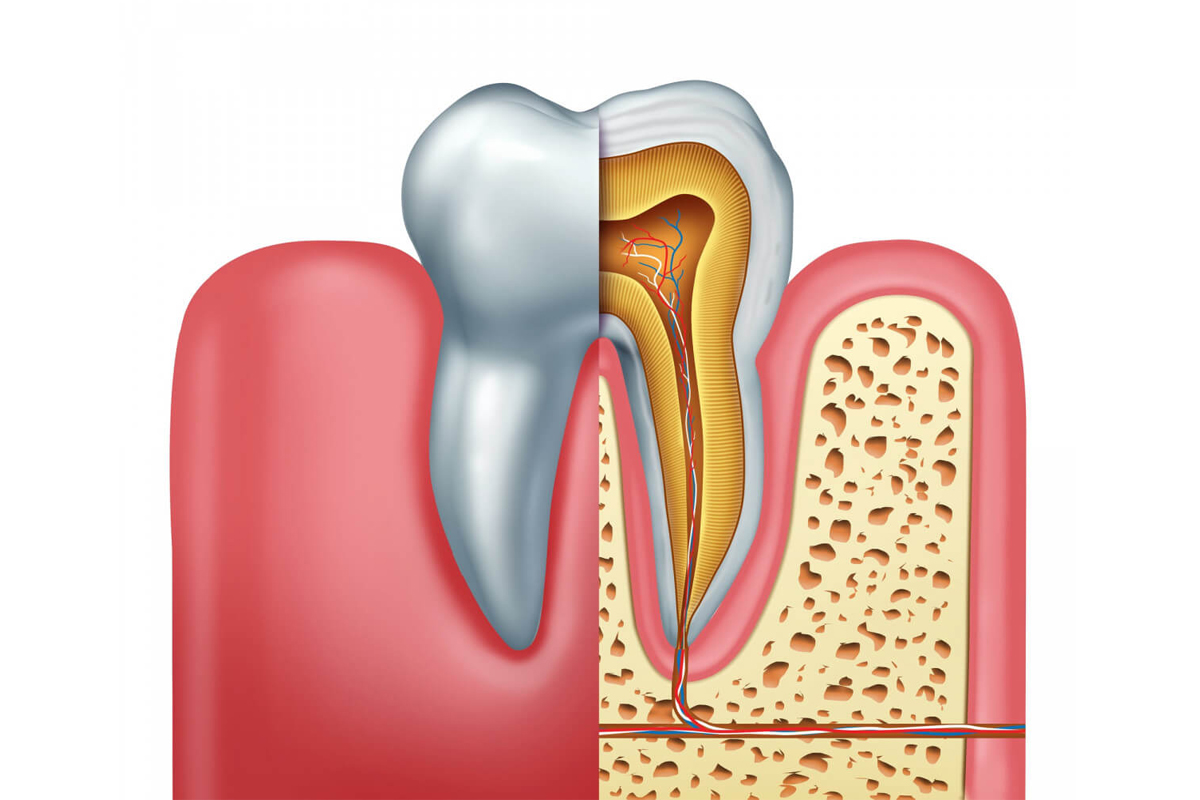5761 SE Federal Hwy, Stuart, FL 34997
The Role of Nutrition in Healing After A Root Canal Therapy

A throbbing toothache can be a disruptive and uncomfortable experience. Root canal therapy, while sometimes viewed with apprehension, can offer a much-needed solution, alleviating pain and potentially saving the tooth. However, following a root canal procedure, a temporary period of dietary adjustments is recommended to ensure proper healing and avoid any discomfort.
Soft and Cool Comfort: Foods That Won’t Irritate
Immediately following a root canal therapy, your mouth will likely be tender. Therefore, prioritizing soft and cool foods is key. Here are some soothing options:
- Mashed Potatoes: This classic comfort food is easily digestible and provides essential carbohydrates for energy.
- Yogurt: Opt for plain yogurt and add some honey or fruit for extra flavor and a boost of probiotics, which can promote gut health.
- Applesauce: This smooth and refreshing option provides vitamins and minerals.
- Soups and Stews: Opt for blended or cream-based soups to ensure they’re easy to swallow. These can be packed with vegetables and protein for a well-rounded meal.
Tooth Preservation: Why Dietary Choices Matter
Following a root canal, the treated tooth might be slightly fragile while healing. Avoiding certain foods can help minimize strain and promote optimal healing:
- Hard and Crunchy Foods: These foods, like nuts, raw vegetables, and hard candies, can put pressure on the treated tooth and potentially cause discomfort or damage.
- Sticky Foods: Caramels, gummies, and other sticky candies can adhere to the temporary filling or crown, increasing the risk of dislodgement.
Importance of Hydration: Keeping Your Body Nourished
Hydration is crucial after any dental procedure, and following a root canal is no exception. Water helps flush bacteria from your mouth, promotes healing, and prevents dehydration, which can contribute to discomfort.
Avoiding the Heat: Opting for Cooler Temperatures
Hot beverages like coffee or tea can irritate the sensitive tissues around the treated tooth. Opt for cool or room-temperature beverages for the first few days after your procedure.
Nutrient-Packed Options: Prioritizing Health During Healing
While focusing on soft foods, aim for options rich in nutrients to support your body’s healing process:
- Scrambled Eggs: A good source of protein for tissue repair.
- Fish: Salmon and other fatty fish are rich in omega-3 fatty acids, which have anti-inflammatory properties.
- Avocado: This creamy fruit provides healthy fats and essential vitamins.
Anti-inflammatory Powerhouses: Foods to Aid Healing
Inflammation is a natural response to injury. Adding these anti-inflammatory foods to your diet can help manage discomfort:
- Berries: Packed with antioxidants that fight inflammation.
- Leafy Greens: Rich in vitamins and minerals, leafy greens promote overall health.
- Tomatoes: A good source of vitamin C, which is essential for tissue repair.
Foods to Avoid after Root Canal Therapy
While some foods are beneficial, others can hinder healing or cause discomfort. Here’s what to temporarily avoid:
- Spicy Foods: Chili peppers and other spicy ingredients can irritate the sensitive tissues in your mouth.
- Acidic Foods: Citrus fruits and tomatoes can cause temporary stinging or discomfort.
- Sugary Drinks: Sugary sodas and juices can contribute to inflammation and promote cavity formation.
The Power of Protein: Promoting Healing and Repair
Protein is essential for tissue repair and rebuilding. Include these protein-rich options in your post-root canal diet:
- Soft Tofu: A versatile source of plant-based protein that can be added to soups or scrambled eggs.
- Chicken or Turkey: Lean protein sources that are easily digestible.
- Lentil Soup: A hearty and protein-rich option that provides fiber and essential nutrients.
Foods that Promote Healing after Root Canal Therapy
Once the initial sensitivity subsides, you can gradually introduce a wider variety of foods that support healing and promote good oral health:
- Yogurt with Berries: A combination of probiotics and antioxidants for a healthy gut and immune system.
- Oatmeal: A source of fiber and complex carbohydrates for sustained energy.
- Leafy Green Salads: Chopped greens with a light dressing provide essential vitamins and minerals.
Immediate Post-Procedure Diet: Soft and Nutritionally Rich Foods
In the first few hours following your root canal, focus on soft and cool foods that won’t irritate the treated area. Here are some excellent choices:
- Applesauce: A refreshing and easy-to-swallow option.
- Mashed Bananas: Provides potassium and other essential nutrients.
- Smoothies: Made with yogurt, fruit, and spinach, smoothies offer a blend of protein, vitamins, and minerals in a cool and refreshing format.
Remember: This blog provides general guidelines. Following your dentist’s specific post-procedural dietary instructions is crucial.
Transitioning Back to Normalcy: Reintroducing Foods Gradually
After a few days, as the sensitivity diminishes, you can gradually reintroduce other foods into your diet. Start with softer options and monitor your tolerance. If you experience any discomfort, discontinue the food and consult your dentist.
Maintaining Good Oral Hygiene: Essential for Optimal Healing
Following a root canal, maintaining good oral hygiene is even more critical. Brush gently with a soft-bristled toothbrush twice a day, paying attention to the treated tooth but avoiding excessive pressure. Flossing gently is also recommended, being mindful of the treated area.
Pain Management: Addressing Post-Procedural Discomfort
It’s normal to experience some mild discomfort or tenderness after a root canal. Over-the-counter pain medication like ibuprofen or acetaminophen can usually manage any discomfort. Your dentist might also prescribe a specific medication if needed.
Follow-Up Appointments: Ensuring a Successful Outcome
Regular follow-up appointments with your dentist are crucial to monitor healing and ensure the long-term success of your root canal treatment. Be sure to schedule and attend these appointments as recommended by your dentist.
By following these guidelines and your dentist’s specific instructions, you can support a smooth healing process after your root canal therapy in Stuart and get back to enjoying a healthy and pain-free smile.



